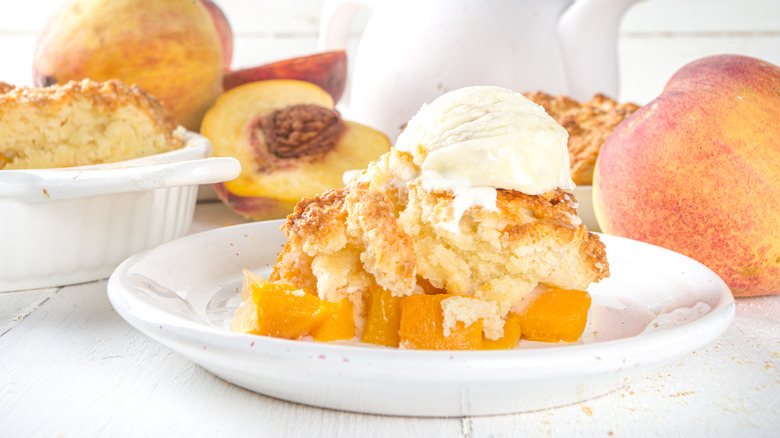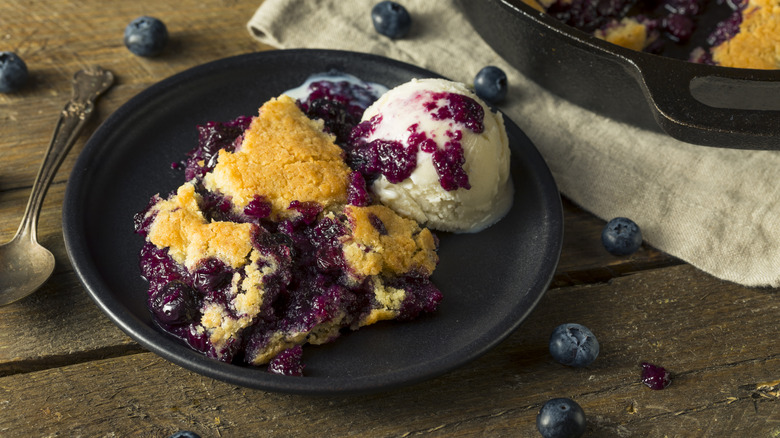Why You Shouldn't Forget The Starch In Fruit Cobbler
Fruit cobbler is a friend to barbecues and picnics alike. The fruity, refreshing dessert is the perfect companion on a summer's evening — or fresh out of the oven any time of year. It is easy to make a cobbler using most types of fruit, which allows you to bake seasonally and use the freshest produce in your dessert.
Cobblers are generally a little easier to bake than pies, states Fine Dining Lovers. They do not require a specific pie pan, nor do they need a full crust. Cobblers typically only have a fruit filling spread out in a pan, with a topping that is generally crumblier and more breadcrumb-like than a traditional pie crust.
When baking a cobbler, since there is no bottom crust to absorb any excess liquid, it is important to make sure that your filling is solid enough to hold up on its own once you slice it to serve. To thicken it up, it is important to add enough starch.
Don't let it fall apart
Before baking your cobbler, you should be coating your ripe fruit in some kind of starch, states Kitchn. They suggest cornstarch to absorb some of the excess fruit juice — after all, no one wants a soupy slice. Too much liquid could cause your cobbler to fall apart when it is sliced and served, and it will be too mushy to enjoy. Plus, too much liquid could soak into the top — instead of that satisfying, slightly crunchy top coat, you could wind up with a mushy mess.
In their peach cobbler recipe, Baking A Moment suggests pre-cooking your peaches in a mix of cornstarch, lemon juice, and sugar to create the filling before adding it to the pan. Once the fruit heats up and bakes, the extra juice will absorb the cornstarch and thicken up in the pan. And, if you want to try your hand at baking a fruity summertime dessert, check out this recipe for a sweet strawberry cobbler.

